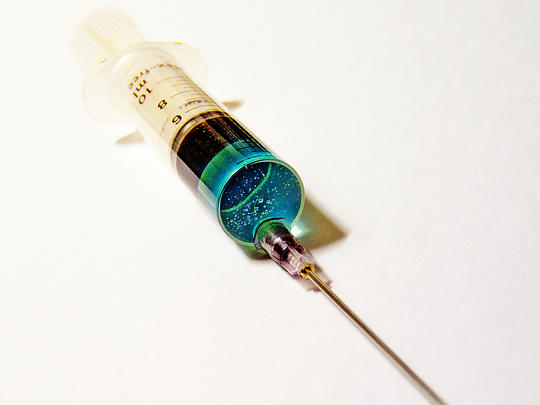
Slate is on fire this month! Hot on the heels of a feature about C-sections, the magazine published a story called “The truth about epidurals” last Wednesday. Author Melinda Wenner Moyer says that women face a slew of conflicting statements when it comes to epidurals. On one hand, the injections contribute to “the over-medicalization of motherhood.” On the other, pregnant women must face the prospect of squeezing “a head the size of a grapefruit through [their]much-smaller-than-a-grapefruit-sized vagina.” What’s a smart, informed, and totally not panicked future mom to do?
When Moyer was pregnant last year, she had trouble separating fact from fiction; to find answers, she delved into dozens of studies about epidurals. Her conclusion? Though the answers are rarely black or white, the claims put forth by natural birthers are largely exaggerated. Here are some common concerns:
- Epidurals hamper a woman’s ability to push: Now false, formerly true. Before the mid-1990’s, this was true because epidurals were different. They contained “a concentration of 0.25 percent local anesthetic…[which]can affect motor neurons, preventing communication between muscles and the brain.” Nowadays, epidurals contain a quarter to half that concentration, as well as a very low dose of narcotics (which doesn’t affect motor neurons) to take the edge off.
- Epidurals increase the risk of C-sections: Not necessarily true. The studies that have suggested this relied on observation, not hard numbers. In fact, the women who asked for epidurals tended to be more at risk than the ones who had natural childbirths (e.g. painful or difficult labors with large babies or abnormal positioning). In other words, “just because epidurals are associated with C-sections does not mean that they cause them.”
- Epidurals heighten the risk of instrumental deliveries: Not necessarily true. Some (but not all) research suggests that epidurals can “increase the risk that a doctor will use forceps or a vacuum extractor to pull the baby out of the birth canal,” which can cause bruising, jaundice, and vaginal injury. However, newer epidurals reduce this risk with their low-dose formulation of local anesthetic.
- Epidurals affect post-birth breastfeeding: Probably false. Natural birthers claim epidurals make babies drowsy. However, there’s no scientific data on whether epidurals cause breastfeeding problems or are simply associated with them. For example, C-sections and other difficult deliveries often require epidurals, and these types of births do impair breastfeeding. A 2010 study surveyed 87 women who had epidurals and found that 95 percent were nursing successfully six weeks after delivery.
Despite this, the science behind epidurals will never be “100 percent certain.” In the end, Moyer says, women shouldn’t cave in to pressure from either side:
I aspired to have a comfortable birth even if it meant being surrounded by nurses and doctors and tubes and incessant beeps; other women may trade pain for a more intimate birthing experience. Each choice comes with its own benefits and unpleasantries. My unnatural childbirth left me with a memory that does not involve intolerable pain, and that’s exactly what I wanted.



